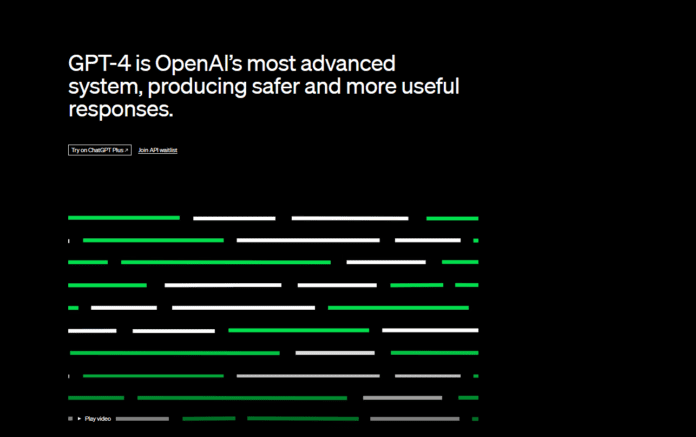OpenAI has released the latest version of its generative pre-trained transformer system, GPT-4, which can generate text on input images. GPT-4 is a state-of-the-art system that can describe images in response to a person’s written commands.
Currently there’s a waitlist for the API available here, or if you subscribe to ChatGPT Plus you can try it now.
OpenAI has partnered with Microsoft to develop GPT’s capabilities, and the new system has been refined based on user feedback generated from the recent ChatGPT. While the technology could revolutionize work and life, it has also fueled anxiety over how people will compete for jobs and trust the accuracy of what they see online.
Officials with the San Francisco lab said GPT-4’s multimodal training across text and images would allow it to escape the chat box and more fully emulate a world of color and imagery, surpassing ChatGPT in its advanced reasoning capabilities.
Microsoft has invested billions in OpenAI, hoping to use its technology as a secret weapon for its online ambitions. OpenAI has launched its fourth “generative pre-trained transformer,” GPT-4, which relies on a breakthrough neural-network technique known as the transformer that can analyze patterns in human speech and imagery.
The technology has raised optimism in its potential but also concerns over its unreliability and unpredictability. Despite the concerns, the technology has seen massive economic potential, as anyone can communicate with the machine using plain English without the need for coding expertise. However, critics warn that the tool could lead to harmful consequences, such as fake photos of nonexistent events or people. Microsoft is currently working to sell the product as a super-efficient companion that can handle mindless work, enabling people to engage in more creative pursuits.
GPT-4 outperforms ChatGPT by scoring in higher approximate percentiles among test-takers.
Following the research path from GPT, GPT-2, and GPT-3, their deep learning approach leverages more data and more computation to create increasingly sophisticated and capable language models.
OpenAI spent 6 months making GPT-4 safer and more aligned. GPT-4 is 82% less likely to respond to requests for disallowed content and 40% more likely to produce factual responses than GPT-3.5 on their internal evaluations.
OpenAI is excited to see how people use GPT-4 as we work towards developing technologies that empower everyone.



















